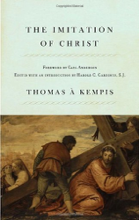Dr. Utr. Iur.
Frank
Van den Broeke

To book an authorised guided tour with me: .... Click here
Wine & Dine: ... Click here
Where to buy your tickets ... ? Click here
The Last Judgement

http://topics.nytimes.com/top/reference/timestopics/people/m/michelangelo_buonarroti/index.html
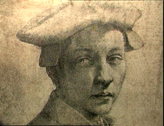
http://hyperallergic.com/42402/italian-renaissance-art-news-gossip/
http://www.michelangelo-gallery.org/biography.html

Thomasso dei Cavalieri
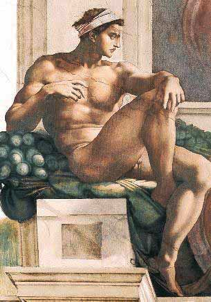
Drawing gift to Thomasso dei Cavalieri
Nicholas Schönberg, Cardinal of Capua,
to Nicholas Copernicus, Greetings.
Some years ago word reached me concerning your proficiency, of which everybody constantly spoke. At that time I began to have a very high regard for you, and also to congratulate our contemporaries among whom you enjoyed such great prestige. For I had learned that you had not merely mastered the discoveries of the ancient astronomers uncommonly well but had also formulated a new cosmology. In it you maintain that the earth moves; that the sun occupies the lowest, and thus the central, place in the universe; that the eighth heaven remain perpetually motionless and fixed; and that, together with the elements included in its sphere, the moon, situated between the heavens of Mars and Venus, revolves around the sun in the period of a year. I have also learned that you have written an exposition of this whole system of astronomy, and have computed the planetary motions and set them down in tables, to the greatest admiration of all. Therefore with the utmost earnestness I entreat you, most learned sir, unless I inconvenience you, to communicate this discovery of yours to scholars, and at the earliest possible moment to send me your writings on the sphere of the universe together with the tables and whatever else you have that is relevant to this subject. Moreover, I have instructed Theodoric of Reden to have everything copied in your quarters at my expense and dispatched to me. If you gratify my desire in this matter, you will see that you are dealing with a man who is zealous for your reputation and eager to do justice to so fine a talent. Farewell.
Rome, 1 November 1536
http://www.scudit.net/mddivietiartemichel.htm
Under construction ....

Michelangelo, Copernicus and the Sistine Chapel
Valerie Shrimplin. Michelangelo, Copernicus and the
Sistine Chapel,
American Journal of Astronomy and Astrophysics.
Vol. 1, No. 1,
2013, pp. 1-7. doi: 10.11648/j.ajaa.20130101.11
If you compare the lower part of Michelangelo’s Last Judgement, which was commissioned by Clement VII as a kind of atonement for the Sack, with a group in Raphael’s Disputa or with the Creation of Adam, you can see that something very drastic has happened to the imagination of Christendom.
Michelangelo had been reluctant to undertake the Last Judgement; under Clement’s successor, Pope Paul II, he was persuaded to continue it although with a rather different purpose. It ceased to be an act of atonement, or an attempt to externalise a bad dream, and became the first and greatest assertion of the Church’s power, and of the fate that would befall heretics and schismatics. It belongs to a period of severity, when the Catholic Church was approaching its problems in rather the same puritanical spirit as the Protestants.
Paul III took the two decisions that were successfully to counter the Reformation: he sanctioned the Jesuit order and instituted the Council of Trent. [The Counter-Reformation] was also a period of austerity and restraint, typified by the leading spirit of the period, St Carlo Borromeo, whose legendary asceticism is commemorated in this picture.
Protagonists of this article:
1. Martin Luther
2. The Sack of Rome
3. Copernicus/Luther
4. Dante Alighieri
5. Council of Trent
6. Poesia Vittoria Colonna
7. Erasmus
8. Savonarola
9. Thomas a Kempis
10. Saint'Augustine: original sin

Poi che ‘l mio casto amor gran tempo tenne
L’alma di fama accesa, ed ella un angue
In sen nudriò per cui dolente or langue
Volta al Signor, onde ‘l rimedio venne,
I santi chiodi omai sian le mie penne,
E puro inchiostro il prezioso sangue,
Vergata carta il sacro corpo exangue,
Sì ch’io scriva ad altrui quel ch’ei sostenne.
Chiamar qui non convien Parnaso o Delo,
Ch’ad altra aqua s’aspira, ad altro monte
Si poggia, u’ piede uman per sé non sale.
Quel sol, che alluma gli elementi e ‘l cielo,
Prego ch’aprendo il suo lucido fonte
Mi porga umor a la gran sete eguale.
Since my chaste love for many years
kept my soul aflame with the desire for fame, and it nourisheda serpent in my breast so that now my heart languishesin pain turned towards God, who alone can help me,let the holy nails from now on be my quills,and the precious blood my pure ink,my lined paper the sacred lifeless body,so that I may write down for others all that he suffered.It is not right here to invoke Parnassus or Delos,for I aspire to cross other waters, to ascendother mountains that human feet cannot climb unaided.I pray to the sun, which lights up the earth and theheavens, that letting forth his shining springhe pours down upon me a draught equal to my great thirst.
In her first sonnet, we see the Christocentric shift
In 1538-39, Vittoria Colonna had her residence in the convent of San Silvestro, Rome. Here she had various meetings with Michelangelo. Her pious life and her zeal for more inner reform, made from her the spiritual mentor of Michelangelo, who addressed her as following:
A man within a woman, or rather a godspeaks through her mouth,
so that I,by having listened to her,
have been made such
that I'll never be my own again.
Un uomo in una donna, anzi uno dio,
per la sua bocca parla,
ond'io per ascoltarla
son fatto tal, che ma' più sarò mio.
I' credo ben, po' ch'io
a me da lei fu' tolto,
fuor di me stesso aver di me pietate;
sì sopra 'l van desìo
mi sprona il suo bel volto,
ch'io veggio morte in ogni altra beltate.
O donna che passate
per acque e foco l'alme
a' liei giorni,
deh, fate c'a me stesso più non torni.

Seeking at least to be not all unfit
For thy sublime and boundless courtesy,
My lowly thoughts at first were fain to try
What they could yield for grace so infinite.
But now I know my unassisted wit
Is all too weak to make me soar so high;
For pardon, lady, for this fault I cry,
And wiser still I grow remembering it.
Yea, well I see what folly 'twere to think
That largess dropped from thee like dews from heaven
Could e'er be paid by work so frail as mine!
To nothingness my art and talent sink;
He fails who from his mortal stores hath given
A thousandfold to match one gift divine.
After he received from Vittoria Colonna 103 devotional sonnets in 1540, he thanked her with the following drawing what is known as the Colonna Pietà.
The following sonnet is accompanying the drawing, again concentrated in the last lines on Divine Grace.
Isabella Stuart Gardner Museum Boston
Per esser manco almen, signiora, indegnio
Dell' immensa vostr' alta cortesia,
Prima, all' incontro a quella, usar la mia
Con tutto il cor volse un mie basso ingegnio.
Ma visto poi c' ascendere a quel segnio
Propio valor non e c' apra la via,
Perdon domanda la mie colpa ria,
E del fallir piu saggio ognior divegnio.
E veggio ben com' erra, s' alcun crede
La grazia, che da voi divina piove,
Pareggi un' opra mia caduca e frale.
L' ingegnio e un' arte e la memoria cede :
C' un don celeste mai con mille pruove
Pagar puo sol del suo chi e mortale.
As one of the leading figures of the pre-Tridentine and proto-Reformation movement in Italy (in Rome & Naples) and as a close spiritual friend of Michelangelo, makes her for sure a women to keep in consideration.
The experiment of the radical Dominican monk Savonarola in Florence had left a bitter taste behind. Also Michelangelo could not agree with this violent way of reforming the church. But the Church needed reform. Thirty years after the dead of Savonarola, this new movement would change the Church with its emphasis on the inner life, since the soul's relation to God was deemed more important than the formal trappings of the Church. Joy of divine grace, and to exhort to live by justified faith, the doctrine of sola fide is carefully supported by appeal to the authority of Church Fathers, the reformed sources—Luther, Melanchthon, Valdés, and Calvin—are just as carefully concealed by the Spirituali, as they called themselves. It was a tiny line walked by those who wanted a better Church.
To understand better Michelangelo and the spirituality expressed in his Last Judgement, I try to bring you on a journey with the people and thoughts that influenced him the most.
And I see four major ones:
1. Savonarola
2. Vittoria Colonna
3. Dante Aleghieri
4. Copernicus


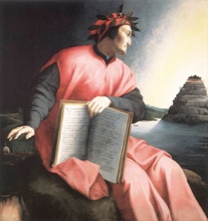

1. His experience of the reformation of Savonarola
2. His spiritual friendship with Vittoria Colonna
3. Dante Aleghieri and his Divine Comedy and ...
4. Copernicus even when his work "De Revolutionibus Orbium Coelestium", Nuremburg, 1543 (ed. J. Dobrzycki, London: Macmillan, 1968.) was published after the Last Judgement was finished.
As a young man in Florence, the passionate Michelangelo must have heard the apocalyptic preaching of Savonarola, and would feel the desire to have a more authentic Church. But he disapproved the methods of Savonarola: destroying art & knowledge. Maybe those visions inspired Michelangelo for making an interpretation of the work of Martin Schongauer, as we can see above.
Michelangelo is known to sneak out of Lorenzo’s palace and to duck into a church to listen to Savonarola, a famous preacher, who condemned the worldliness of his time. Michelangelo’s older brother Leonardo became a Dominican friar and a follower of Savonarola.
"He (Michelangelo) much delighted in the sacred Scriptures, like the excellent Christian that he was; and he held in great veneration the works written by Fra Girolamo Savonarola, because he had heard the voice of that friar in the pulpit." (Vasari)
Savonarola Gerolamo ° 1452 - + 1498
"One day, while Domenico was engaged upon the large chapel of S. Maria Novella, Michelangelo drew the scaffolding and all the materials with some of the apprentices at work. When Domenico returned and saw it, he said, "He knows more than I do," and remained amazed at the new style produced by the judgment of so young a boy, which was equal to that of an artist of many years' experience. To this Michelangelo added study and diligence so that he made progress daily, as we see by a copy of a print engraved by Martin the German [Martin Schongauer], which brought him great renown. When a copper engraving by Martin of St. Anthony beaten by the devils reached Florence, Michelangelo made a pen drawing and then painted it. To counterfeit some strange forms of devils he bought fish with curiously coloured scales, and showed such ability that he won much credit and reputation. He also made perfect copies of various old masks, making them look old with smoke and other things so that they could not be distinguished from the originals. He did this to obtain the originals in exchange for the copies, as he wanted the former and sought to surpass them, thereby acquiring a great name." (Vasari, o.c.)

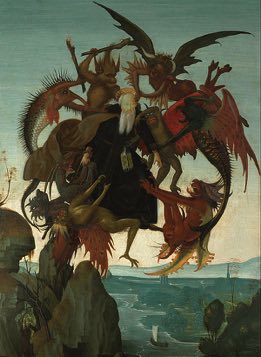
Michelangelo, the Torment of Saint Anthony, 1487-88
Martin Schongauer, The Temptation of Saint Anthony, 1470-75
Meanwhile, Michelangelo agreed with Savonarola in his teaching, but couldn't find himself at ease with the methods. He had left Florence and he became famous under the most infamous pope: Alexander VI of the Borgia family. In 1500 he had made his Pietà in the St. Peter's Basilica for a french cardinal. As an introvert man, he gave more importance to the gospels than to the institutions.
Not that the movement was something totally new: Shortly after the death of Saint Francis in 1226, his order got divided. The so-called Spiritual Franciscans. Some in the order lamented that the order became to wealthy and insisted on observing the strict poverty practiced by Francis himself. (David Bur); The Church didn't want to follow and persecuted them heavily, together with the Waldensians. This conflict is quite well described in the roman of Umerto Eco, In the Name of the Rose.
Johan van Ruysbroek (1300-82), beato, the writer of The Spiritual Espousals, was a close friend of Gerardus Grotius, founder of the Devotio Moderna, a movement that inspired centuries later also Vittoria Colonna, the spiritual mentor of Michelangelo
In the 14th Century more and more was heard the voice of Thomas a Kempis, an Augustine monk. His Imitation of Christ became one of the most read spiritual works of history. A request for a more inner lifestyle and a return to an authentic Christianity. It had followers everywhere. The influence of the Augustinian thoughts about sin, and escaping from it following the light, will become central in the Last Judgement of Michelangelo. Thomas a Kempis quoted: "At the Day of Judgement we shall not be asked what we have read, but what we have done." — The Imitation of Christ, Book I, ch. 3


Pope Francis has asked Waldensian Christians to forgive the Catholic Church for historic persecution. June 2015
Savonarola never wanted to break with the Church, but accused the immoral behavior of it's leaders. Unfortunately, his methods resembles more at those of the Islamic state today. His doom-preaching made that the Medici had to leave Florence and a theocratic state was formed. Then Savonarola destroyed the (pagan) collection of art of the Medici, people got dressed in black and did processions of repentance. Pagan books and music instruments were burned in bon-fires .... but in 1498, under the tread of Pope Alexander VI to invade Florence, he was put on the stake and burned publicly.

This painting reflexes quite well the influence that the tormented monk Savonarola had on the spirit of a young boy of 13 yrs old.
In 1536-38, Cardinal Gasparo Contarini, the former legate of the pope in Venice, and nominated Cardinal under Pope Paulus III (Farnese), gave the "Spirituali" a boost when he, on request of the pope himself, produced a document called: Consilium de Emendanda Ecclesia. A blue-print of how the catholic Church could reform and against the excesses of the clergy. Unfortunately, even it was very well-spread over Europe (even Martin Luther wrote on a copy cynical commentary), it remained a dead letter. Paulus III, who commissioned Michelangelo to continue his Last Judgement, felt that the Church was in the urge of reform. Vittoria Colonna, and her spiritual movement must have been enlighted. One of the cardinals that frequented the movement was Gian Pietro Caraffa, the future pope Paulus IV. When he installed the Index of prohibited books, years later, he turned in the other direction and it got prohibited by the index (Index Librorum Prohibitorum). The (church) Inquisition, erected by him, started to persecute the members of the Spirituali. They were accused to seak too much reconciliation with the protestants. Vittoria Colonna escaped it by dying prematurely. Later we will see how the Last Judgment got altered after the dead of Michelangelo by Daniela da Voltera, the "Breaches-maker".
It’s a question that exasperated members of a credibility-challenged organization have long asked about their leaders. How can we trust that the people who got us into a bad situation can get us out of it? Since the clergy sexual-abuse scandal broke in Boston over a decade ago, it’s been a common question for the U.S. church, and now it’s gone worldwide.
The universal church just witnessed an ABC vote in the papal conclave: If Italian press reports of the pre-conclave meetings are credible, the cardinals wanted “Anyone But a Curialist.” Now Pope Francis seems poised to address the question of reforming the Vatican’s bureaucracy with his appointment of an eight-cardinal commission charged with making recommendations to improve the Roman curia. Only one of the appointed cardinals works full-time in the curia, and several have bruises from prior tangles with Rome’s headquarters. Bringing outsiders in for a close look seems to be the point, but it’s not the first time this has happened.
Soon after his election as Pope Paul III in 1534, the former bad-boy cardinal Alessandro Farnese (he’d gotten his red hat via his sister, Giulia Farnese, who was papal mistress to Alexander VI) named a reform commission from outside Rome just as Pope Francis did in April. The result of their study was a long memo called the Consilium de emendanda ecclesia, or Counsel on Reforming the Church, which targeted poor management, unseemly examples, and scandals at the church’s leadership levels. “For how can this Holy See set straight and correct the abuses of others,” the Consilium asked, “if abuses are tolerated in its own principal members?”
Paul III deliberately chose reform-minded men, mostly from outside Rome. Among them we find the impressive Reginald Pole from England, a friend of Erasmus named Jacopo Sadoleto—who would soon engage Calvinists in dialogue—and the open-minded Gasparo Contarini. Naming those commissioners placed the prestige of the papacy behind ideas of reform that had been bubbling for decades but had not been allowed to reach a boil—until Martin Luther posted his 95 Theses in 1517. Though late to the game, the commission’s work would exercise an influential role in changing the climate in Rome from playing blind defense to understanding the need for honest self-criticism and vital reform in church governance.
What’s striking in the Consilium is its straight talk. The report was called “a compilation of those diseases and their remedies” directed at “the renewal of the church of Christ.” It labeled simony and nepotism, especially in the papal court, a “Trojan horse” from which “so many abuses and such grave diseases have rushed in upon the church of God that we now see her afflicted almost to the despair of salvation.” The commissioners made recommendations that, over time, found their way into the canons of the Council of Trent (1545-1563). The Consilium notably called for improved screening, training, and oversight of the clergy, who should never be absent from their flocks. It singled out pardoners, familiar to readers of Chaucer’s Canterbury Tales, who sold indulgences and even absolution. Such men “deceive the peasants and simple people and ensnare them with innumerable superstitions.” They also wanted to restrict dispensations allowing priests to marry, “especially in these times when the Lutherans lay such great stress on this matter.”
In words that Luther himself could have written after his disillusioning visit to Rome in 1510, the committee lamented “the hatreds and animosities of private citizens” there as well as the “harlots [who] walk about like matrons or ride on mules, attended in broad daylight by noble members of the cardinals’ households and by clerics” in a city revered as “the mother and teacher of the other churches.”
Someone in Rome leaked the Consilium to Luther, who published it in German a year later, complete with biting comments in the margins. It was hard for Roman Catholics, including those leaning toward reform, to admit agreeing with the commission’s verdicts when Luther himself said they were on target—even as he doubted they could work. In his own preface, Luther dismissed the commission’s effort: “They cannot let themselves be reformed, and do not want to be.” Why? “If all this filth were to be shaken up in a free council, can you imagine what a stink would rise?”
When the committee began with a statement of thanks to God for Paul III’s election and leadership, Luther commented, “Dear me, how seriously the holy see takes this matter! It is too bad that no one believes these scoundrels and liars any longer (providing that anyone could feel sorry about that).” When the Consilium called for popes to stop profiting from their offices and for pastors to live in their parishes—simply—Luther scoffed, “Let that one be kept and then see what becomes of the pope, cardinals, bishops, priests, monks, and all their splendor. But they have to talk like that, to make people think that their reformation is in earnest.” He asked, “Shall the cardinals and prelates give back the parishes they have stolen? That would be dreadful! But what harm does it do to say it, so long as one does not mean it?” And when the Consilium hit close to one of Luther’s favorite targets by criticizing indulgences, he ticked that one off the list: “That has already been reformed by Luther.”
What did the Consilium accomplish? In the short run, not much, especially given its high-flying optimism and lack of a well-thought-out plan of specifics. The memo was more a description of disheartening problems than a prescription of systemic solutions. The reform commission pointed out that the church’s problems flowed from the top, so if the papacy admitted that it needed to be reformed, it was also admitting that it had become deformed—and wasn’t that just what some Protestants and earlier reformers had been saying all along? Luther seized on that point: “If [the pope] should now be charged with error in one little point, then all his articles would become suspect.”
As it turned out, Paul III failed to vigorously pursue the reform commission’s recommendations; the passive-aggressive behavior of curial resistance prevented a major overhaul. But a critical first step had been taken—and in the right place, Rome. With the Vatican’s problems described at length and openly, an attitude of reform was in the air. Even more important, these ideas had blown in from the church’s edges right into her central office. A quarter-century after the Consilium, the church was on the path to implementing Trent. Within a few generations, she would enjoy better bishops and more able priests, along with structures for improved catechesis and a lively devotional life among the laity.
None of that happened as fast as reformers would have liked. It took time, but in the church, that’s how change happens. (end of article)
The following article I took from "The Outsiders / Commonwealmagazine.com", May 7, 2013.
But the problems that the Church is challenging now, are not totally new: The abuse of power. Dott. Bellito makes a marvelous parallel between what happened in Michelangelo's time and the action that took Pope Francis I against sexual abuse by the clergy. (and we can even apply the question to the Greek economic crisis: who is guarding the bankers??)
Cardinal Reginald Pole was a close friend of Vittoria Colonna when she was in Viterbo. Recently they found a few letters of their correspondence. Both were member of the Spirituali. That puts Michelangelo in a tradition of those who wanted a renewal of the Church. But as is pointed out in the article above, there was still a lot of resistence by those who benefited of simony, bribes and selling indulgencies. For sure, the movement tormented and influenced enormeously Michelangelo. On one hand his beliefs, on the other hand living from the Papal court he thaught it should change its behaviour.
But we will see how Michelangelo through his art is using his talents as artist to create an environment ready for the Council of Trent a few years later, were the top of the Church will change for the better.
We neither have to forget that in the days Michelangelo was working new spirituality movements were on their way, and none of them had it easy with the hierarchy of the Church: The Jesuits, Charles Borromeo, the Theatines, the Cappucins and not at least in 1535 the arrival in Rome of Saint Philip Neri, who will become the dean of all them and the confessor of five popes of the Catholic Reformation until the end of the 16th century, when he died in 1595.
The Church was on the move for better, and -as we will see- Michelangelo was in the front-line for the change.
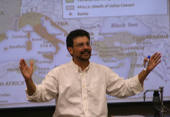
Christopher M. Bellito
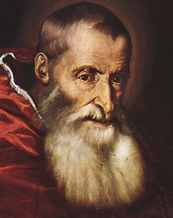
Paul III, Farnese
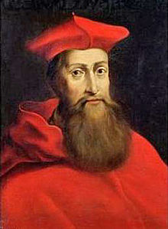
Card. Reginald Pole, Canterburry
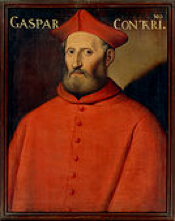
Card. Gasparo Contarini

Marin Luther
The next poetry is of Vittoria Colonna, ..... most important is grace: "God, who alone can help me ..." Salvation through grace, and not through the Institutions of the Church (almost protestant !!!??)


The Burning of Savonarola in 1498, Filippo Dolciati (1443-1519)
Vittoria Colonna °1490 - + 1547

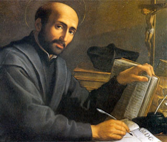


San Philipp Neri
Sant'Ignatius of Loyola
San Felice da Cantalice (Rubens)
San Gaetano da Tiene(Naples-statue)

Saint Charles Borromeo
Dante Aleghieri °1265 - +1321: The Divine Comedy
Copernicus: a Revolution or ... not
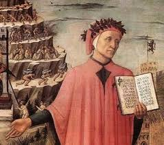
Those who visited once Avignon in France, must come back and being astouned. The popes lived only there from 1309 until 1377. About 70 yrs. And almost the whole city is the palace of the popes. How they managed to raise thàt enormeous amount of money?
If you are a businessman and you have a good product, and you want to sell it, you need to make pubblicity so that your brand will be known worldwide. And that is exactly what Dante Alighieri did with his incredible work: The Divine Comedy.
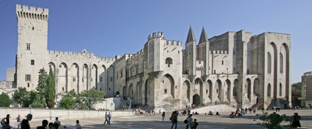
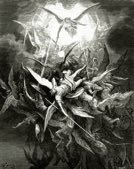
Today, we have something similar: the American presidentials of the year 2016: Bernie Sanders and Hillary Clinton. If you want to change something in a company for which you are working and you disagree with your boss, you have two choices: or you walk out, starting a company on yourself (like Martin Luther, and then with facebook and twitter attaching the enemy, or, .... you remain in the company and you try to become member of the board (like Michelangelo) for changing the direction from inside ... something that also Bernie Sanders tries to do in the presidentials of 2016. Protestant movement was against the 1% of the Establishment, the Vatican and their outrages lifestyle ... as we had the Pope Borgia, Alexander VI, with 4 legitimate children and 34 illegitimate ....

Ark of the Covenant: YouTube
Michelangelo and Paul III Farnese : important to read

